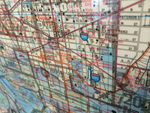Hong Kong's peak tourist season used to be in spring and fall, but now tourists come to Hong Kong virtually year-round, especially from neighboring mainland China. It's best, therefore, to make hotel reservations well in advance, particularly if you're arriving during the Chinese New Year, one of the festivals described below, or during the two peak vacation periods for mainland Chinese (the so-called "Golden Weeks" beginning May 1 and Oct 1). In addition, major conventions and trade fairs can also tie up the city's best hotels, particularly in spring (Mar-Apr) and autumn (Oct-Nov); check www.discoverhongkong.com for an updated calendar. If you're on a budget, keep in mind that many Hong Kong hotels offer package deals and cheaper rates in summer and winter.
Climate
Because of its subtropical location, Hong Kong's weather is generally mild in winter and uncomfortably hot and humid in summer, with an average annual rainfall of 2.3m (89 in.). The most pleasant time of year is late September through early December, when skies are clear and sunny, temperatures are around 70° to 78°F (21°-26°C), and the humidity drops to 70%. January and February are the coldest months, when temperatures can drop to 50°F (10°C) but usually hover around 60°F (16°C). You'll want a jacket during this time.
In spring (Mar-May), the temperature can range between 64° and 81°F (18°-27°C) and the humidity rises to about 85%, with fog and rain fairly common. That means you'll need a raincoat and the cloud-enveloped Victoria Peak won't provide much of a view. By May, it can also be quite hot and muggy.
By summer (late May to mid-Sept), temperatures are often between 89° and 99°F (32°-37°C), humidity can be 90% or more, and there's little or no relief, even at night. If you're visiting the SAR this time of year, you'd be prudent to carry a hat, sunblock, sunglasses, and plenty of bottled water with you wherever you go. You'll also want a light jacket for air-conditioned rooms and an umbrella. This is when Hong Kong receives the most rain; it's also typhoon season. However, Hong Kong has a very good advance-warning system.
Understanding the Deluge: Tropical Storm Warnings -- It's not likely you'll experience a tropical storm during your stay in Hong Kong, but if you do, consider it part of your Asian experience. Called typhoons (after the Cantonese dai fung, which translates as "big wind") and cyclones in this part of the world and called hurricanes in the West, these severe tropical storms can vent their fury from May to November but are especially prevalent in September. There's no need to worry that a storm may sneak up on you unaware -- storms are tracked and monitored and are rated according to their strength. Their approach dominates local news, but even if you don't read the newspapers or listen to the evening news, you'll see other telltale signs of a coming typhoon -- Mass Transit Railway (MTR) stations, hotel lobbies, and businesses post notices, and shopkeepers cover their windows with storm shutters.
Whenever a severe tropical rainstorm or typhoon is approaching Hong Kong, an alert is broadcast continuously on TV and the radio to keep you informed of the storm's movements. To keep people better informed of the severity of a storm, a system of numbers has been developed that begins at Typhoon Signal No. 1, continues to Typhoon Signal No. 3, and then jumps to Typhoon Signal No. 8 and up. (The numbers in between were dropped when the long range proved too confusing.)
Typhoon Signal No. 1 goes up when a tropical storm that could escalate into a typhoon has moved within an 800km (497-mile) radius of Hong Kong. Although public transportation and organized tours and outdoor activities continue as scheduled, this signal indicates that the public should be on alert. Most locals, however, are rather indifferent to a No. 1, especially since this condition can last for several days, with little physical indication of an approaching storm.
Typhoon Signal No. 3 is given when the winds have escalated, accompanied, perhaps, by heavy rains. By this time, organized guided tours and harbor cruises have generally been suspended. Visitors should check with authorities before venturing on day trips to the outlying islands or Macau. Some businesses may close, as employees head for home while public transportation is still running.
Typhoon Signal No. 8 indicates that the gale has reached Hong Kong. Banks, offices, museums, and most shops and restaurants close, and road, ferry, rail, and air transport is suspended. Never take a Signal No. 8 lightly, but rather, remain in your hotel and celebrate with a typhoon party, which is pretty much what everyone else does. There's nothing like a tropical storm to set the adrenaline running. The last time a No. 10 typhoon reached Hong Kong (with hurricane force wind reaching sustained speeds of upwards from 118 km/73 miles per hour) was in 1999.
Full details of Hong Kong's typhoon warning system can be found in the local telephone directory. For information during a storm, listen to TV or radio broadcasts or call the Hong Kong Observatory at tel. 852/2835 1473 or check its website at www.hko.gov.hk.
Holidays
Hong Kong has 17 public holidays a year, including some of the festivals described below. The majority are Chinese and are therefore celebrated according to the lunar calendar, with different dates each year (for a rundown of Hong Kong's holidays, go to www.lcsd.gov.hk/en/home.php). Because most shops, restaurants, and attractions remain open except during the Chinese New Year, the holidays should not cause any inconvenience to visitors. Banks, however, are closed.
Note: This information was accurate when it was published, but can change without notice. Please be sure to confirm all rates and details directly with the companies in question before planning your trip.








